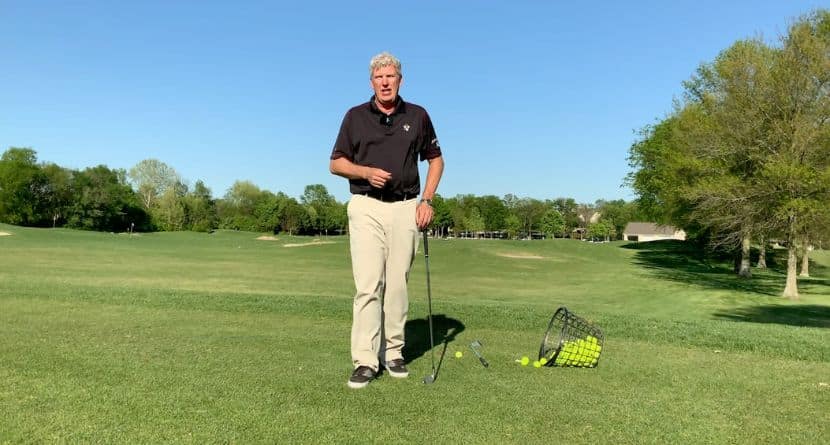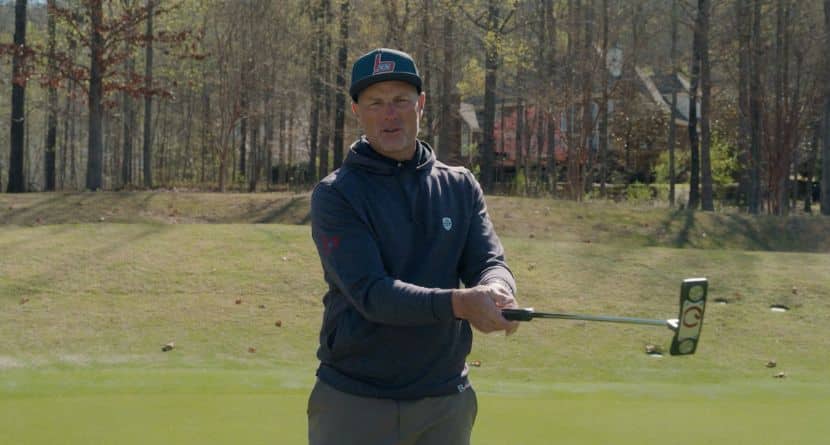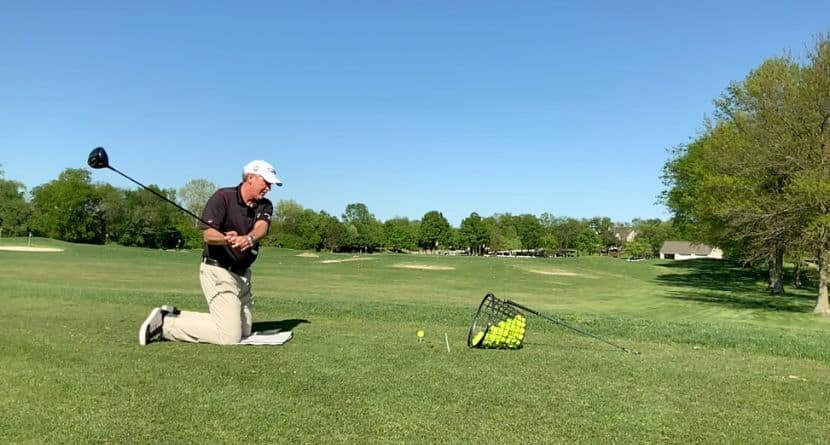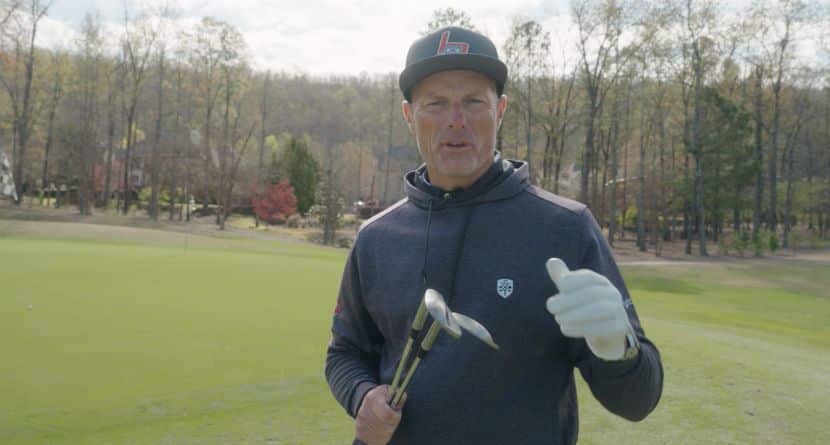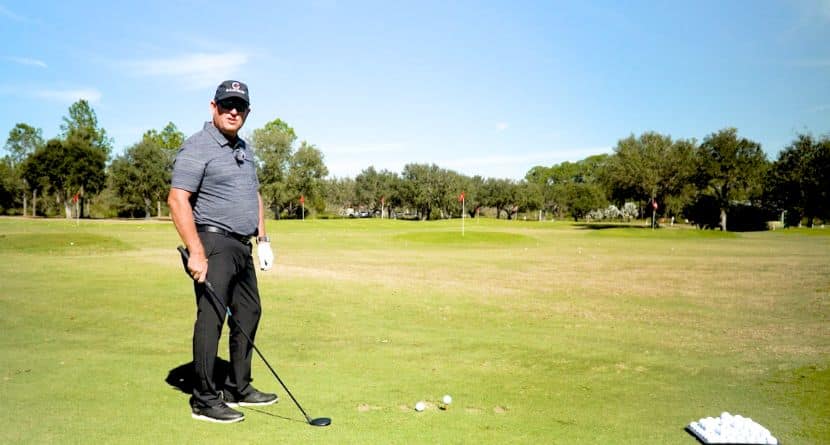There are lots of ways players and instructors describe this specialty pitch shot. The key is generating lots of dead energy. Bill Haas holed out for birdie from a spot many would have taken a chance at a long par putt.
On the par-3 7th hole, Haas was about 35 yards away from the flag. The ball was on the upslope in some rough and a bunker between him and the target created a tricky forced carry, not to mention having just 10 feet of green to work with.
How did he hit the shot so well, never mind hole it? The answer, Haas used a dead energy swing that was mostly all upper body on the way back and into the ball. With practice, this can become a reliable and useful shot when the ball needs to hit a precise spot with a steep downward trajectory.
At Setup
- If the lie is uneven, take a wider than normal stance to provide stability. If it is fairly level, a normal stance will work fine.
- Since we are playing from the rough, open the club slightly to combat the grass shutting the clubface down and ruining our desired trajectory.
- Play the ball in the middle of the stance and position a majority of your body weight forward (leaning towards the target) on the lead side. This helps create the descending motion during the downswing.
A Dead Energy Swing Motion
- The key to this shot is being quiet with the core and shoulders and letting the arms do the work on the way back. Watch as Haas makes a very smooth backswing and observe the arms doing the work.
- From the top, let it drop! Once you have the club in a nice high position on the way back feel like you let your arms go dead. The club will fall with force, but you don’t need to add any because that would send the ball on a more forward trajectory versus the vertical launch we are looking for.
- After much practice, players know exactly how far back the club needs to travel in order to fall and power through the rough and still produce the butterfly-with-sore-feet landing.
NOTE: The finish is key and it will happen naturally. Allow your pressure to transfer through impact, but it is the legs and core that will turn and shift — not the arms. This is not a shot with a long fluid finish. The fact that we are letting the arms drop with no additional force means they will likely not travel past impact very far. So you can anticipate a finish where you are facing the target but the arms and hands are hanging low and by your waist.


